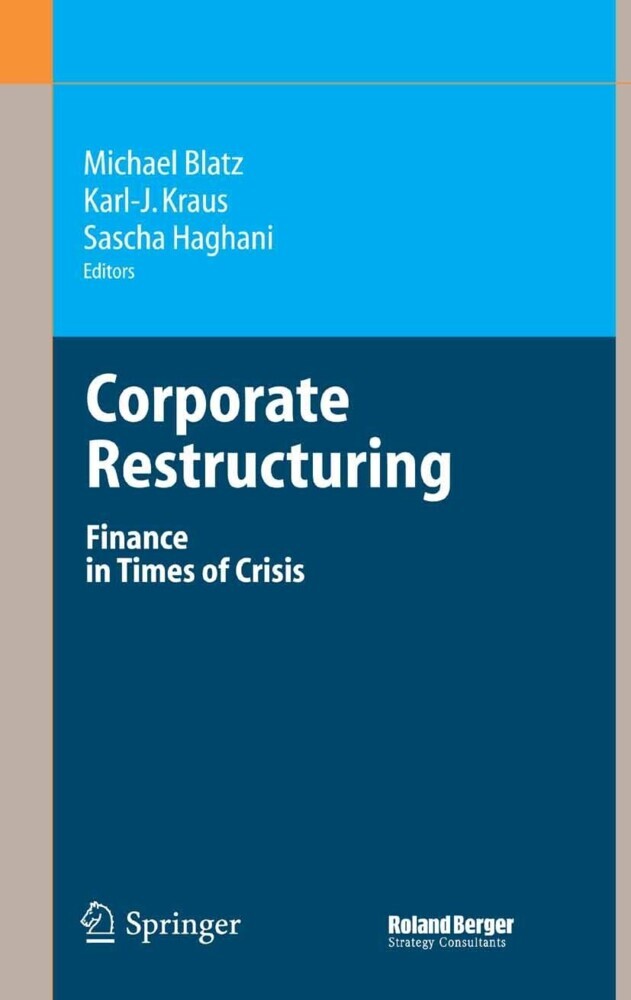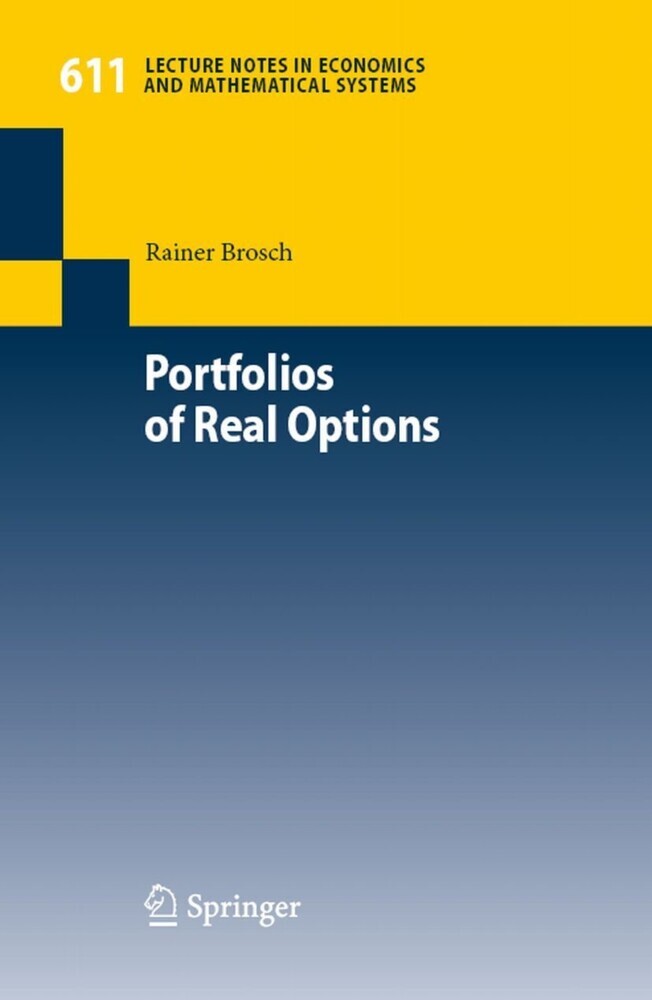Current Challenges for Corporate Finance
A Strategic Perspective
Strategic corporate finance? This sounds like a paradox at first. After all, corporate finance means responding to the financial markets. Strategy, on the other hand, aims to change and shape the environment in the long term. Lately, though, more and more managers and investors appear to be breaking the laws of the capital market. At the same time, corporations are discovering new ways to not just react to the capital markets, but to actively shape them. The authors show that these violations are not isolated occurrences, but part of a paradigm shift. If companies want to stay successful in changing markets, they have to take a strategic approach to corporate finance. The authors use practical examples to demonstrate how this can be achieved. This book is intended not only for corporate finance experts, but also for students interested in the latest developments on the financial markets.
This book is a product of Roland Berger Strategy Consultants' Academic Network. Under the leadership of Dr. Tobias Raffel, the network brings together professors and Roland Berger Partners to work on current business topics that are equally relevant in theory and practice.
This book is a product of Roland Berger Strategy Consultants' Academic Network. Under the leadership of Dr. Tobias Raffel, the network brings together professors and Roland Berger Partners to work on current business topics that are equally relevant in theory and practice.
1;Contents;62;Introduction;102.1;The Paradox of Strategic Corporate Finance;102.2;The Transition to Strategic Corporate Finance;122.3;Structure of this Book;133;1 Old and New Financial Paradigms;153.1;1.1 Research into Financial Theory;153.2;1.2 Old Finance;163.3;1.3 Neoclassical Finance;183.4;1.4 Modern Portfolio Theory and Option PriceTheory;203.5;1.5 Empirical Financial Market Research;233.6;1.6 Corporate Finance;263.7;1.7 Strategic Corporate Finance;293.7.1;1.7.1 On the Attractiveness of Markets and theImpotence of Market Players;293.7.2;1.7.2 Complexity-Driven Problems with Valuation;313.7.3;1.7.3 Information Imbalances in Markets;323.7.4;1.7.4 Combining the Provision of Knowledge and Capital;334;2 Mergers and Acquisitions;354.1;2.1 Managers and Investors as Market Players;354.2;2.2 Traditional Collaboration Strategies;374.3;2.3 Growth Driven by Strategic CorporateFinance;404.3.1;2.3.1 Diversifying Business Activities;414.3.2;2.3.2 Adapting the Product Portfolio to MarketRequirements;434.3.3;2.3.3 First-Mover Advantage for Market Pioneers;454.3.4;2.3.4 Access to Resources and Fluid Market Boundaries;474.4;2.4 Different Growth Strategies;505;3 Corporate Communication;515.1;3.1 The Content of Corporate Communication;515.2;3.2 Who Is Corporate Communication Aimedat?;545.3;3.3 Generic Communication Strategies;565.4;3.4 Communication Strategies for Mergers andAcquisitions;595.4.1;3.4.1 Aligning Product Portfolios with MarketRequirements;605.4.2;3.4.2 First-Mover Advantage in Networks;635.4.3;3.4.3 Diversification with a View to Forminga Conglomerate;655.4.4;3.4.4 Fluid Market Boundaries and Access to Resources;685.5;3.5 Strategic Financial Communication:Case Study -- Bertelsmann;696;4 New Forms of Funding in StrategicCorporate Finance: EntrepreneurialFinance, Venture Capital, PrivateEquity and Hedge Funds;716.1;4.1 Private Financial Investors Who BackInnovation and Growth;716.2;4.2 Entrepreneurial Finance andVenture Capital;746.2.1;4.2.1 From Invention to Innovation;746.2.2;4.2.2 Entrepreneurial Finance for the Early Stages;756.2.3;4.2.3 Venture Capital Financing for the Expansion Stage;776.2.4;4.2.4 Private Equity to Top up Venture Capital;786.3;4.3 Private Equity Funding;796.3.1;4.3.1 Buyouts Designed to Maintain, Realign orRestructure a Company's Operations;806.3.2;4.3.2 Financial LBOs --- Breaking up and Selling out;836.4;4.4 Hedge Fund Financing;857;5 The Importance of CSR Capitalfor Sustainable Strategic CorporateFinance;887.1;5.1 Introduction;887.2;5.2 The Financial Markets' Role in Showcasingthe New Concept of Value;887.3;5.3 Quality Criteria for Defining "Good" Capitaland "Good" Finance;907.3.1;5.3.1 The Origin of Funds;917.3.2;5.3.2 The Use of Funds;947.3.3;5.3.3 Current Trends: The "Locust" Phenomenon;977.4;5.4 The Framework for Institutional Action;1017.5;5.5 On the Role of Speculation;1027.6;5.6 The Value Discussion Revisited?;1037.7;5.7 The Valuation Functionof the Financial Markets;1067.8;5.8 The Real Economy Versus Speculation:An Answer to the Question of Quality?;1077.9;5.9 The Role of Ratings and Certification;1087.10;5.10 Summary;1108;6 Investor Churn;1138.1;6.1 The Investment Landscape Today;1138.2;6.2 Investor Churn: A New Phenomenon?;1158.2.1;6.2.1 Corporate Raiders --- Developments in the 1980s;1158.2.2;6.2.2 The "New Economy" Emerging ---Developments Between the 1990s and 2002;1168.2.3;6.2.3 A Worldwide Hype in M&A and Private EquityActivities --- Developments Between 2002 and 2007;1178.2.4;6.2.3 Blankness After the Hype?! ---Developments Since 2007;1208.3;6.3 How the Advent of International InvestorGroups Is Rewriting the Rules of CorporateManagement;1228.3.1;6.3.1 Alternative Financing Options Thanks to NewInvestor Groups --- Consequences for Companies;1228.3.2;6.3.2 How the Advent of International Investor GroupsIs Rewriting the Rules of Corporate Management ---Consequences for Management;1238.4;6.4 Conclusion and Outlook;1269;Ab
Eilenberger, Guido
Haghani, Sascha
Kötzle, Alfred
Reding, Kurt
Spremann, Klaus
| ISBN | 9783642041136 |
|---|---|
| Artikelnummer | 9783642041136 |
| Medientyp | E-Book - PDF |
| Auflage | 2. Aufl. |
| Copyrightjahr | 2009 |
| Verlag | Springer-Verlag |
| Umfang | 122 Seiten |
| Sprache | Englisch |
| Kopierschutz | Digitales Wasserzeichen |











